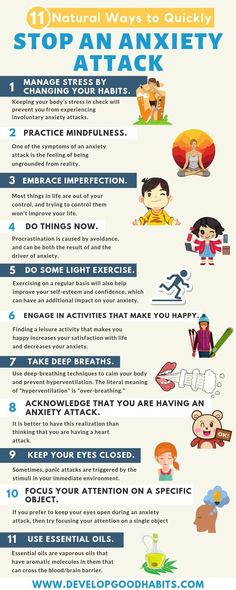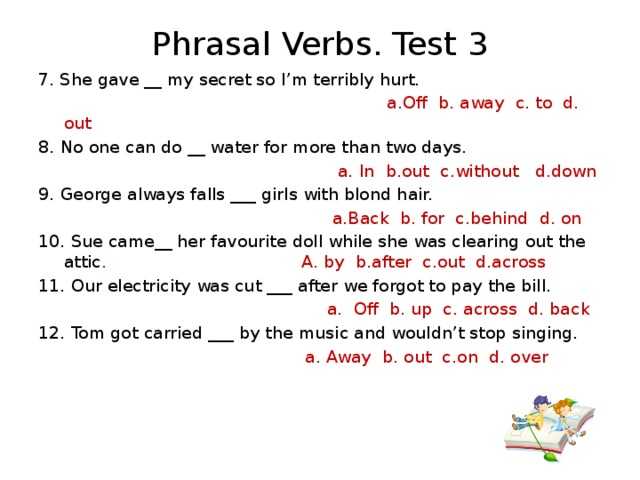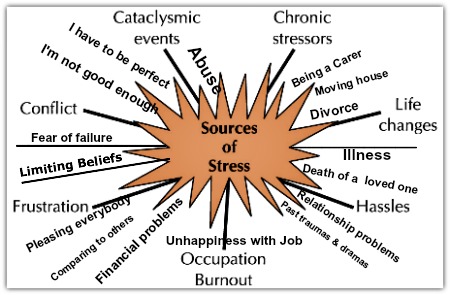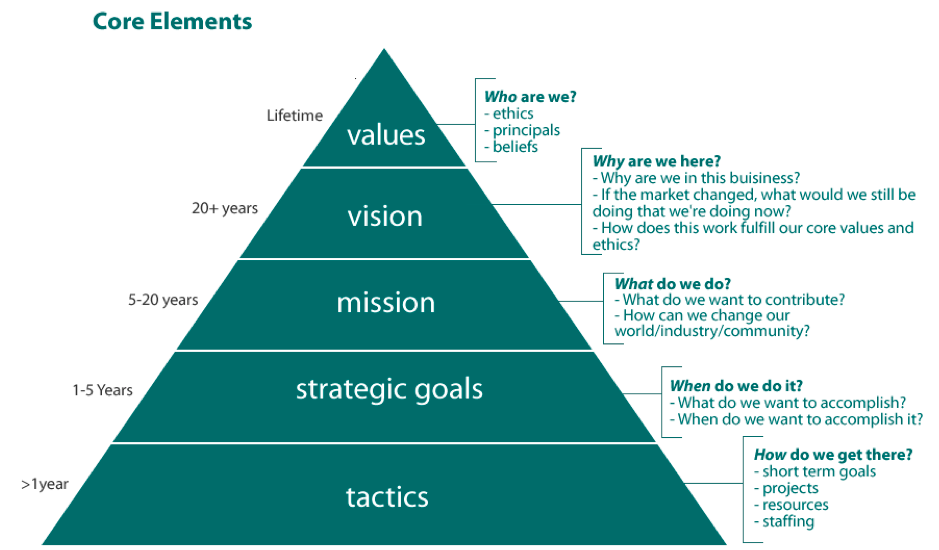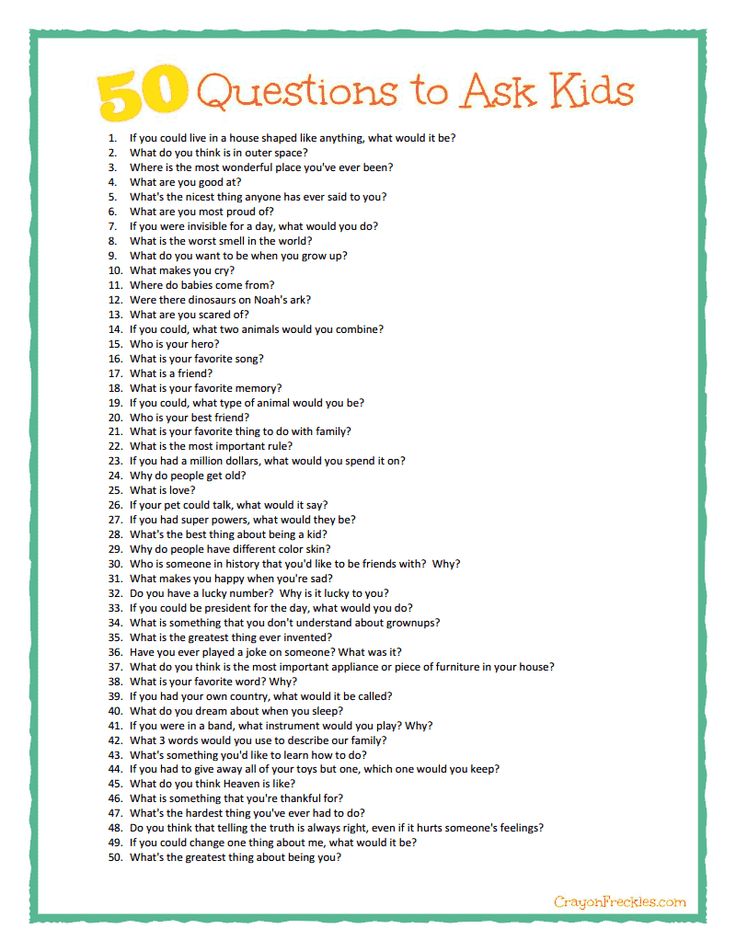Breathing techniques for anxiety attacks
How to deal with panic attacks
A panic attack is a feeling of sudden and intense anxiety.
Panic attacks can also have physical symptoms, including:
- shaking
- feeling disorientated
- nausea
- rapid, irregular heartbeats
- dry mouth
- breathlessness
- sweating
- dizziness
The symptoms of a panic attack are not dangerous, but can be very frightening.
They can make you feel as though you're having a heart attack, or that you're going to collapse or even die.
Most panic attacks last somewhere from 5 minutes to half an hour.
How to handle a panic attack
Professor Paul Salkovskis, Professor of Clinical Psychology and Applied Science at the University of Bath, says it's important not to let your fear of panic attacks control you.
"Panic attacks always pass and the symptoms are not a sign of anything harmful happening," he says. "Tell yourself that the symptoms you're experiencing are caused by anxiety. "
He says don't look for distractions. "Ride out the attack. Try to keep doing things. If possible, it's important to try to remain in the situation until the anxiety has subsided."
"Confront your fear. If you don't run away from it, you're giving yourself a chance to discover that nothing's going to happen."
As the anxiety begins to pass, start to focus on your surroundings and continue to do what you were doing before.
"If you’re having a short, sudden panic attack, it can be helpful to have someone with you, reassuring you that it will pass and the symptoms are nothing to worry about," says Professor Salkovskis.
Breathing exercise for panic attacks
If you’re breathing quickly during a panic attack, doing a breathing exercise can ease your other symptoms. Try this:
- breathe in as slowly, deeply and gently as you can, through your nose
- breathe out slowly, deeply and gently through your mouth
- some people find it helpful to count steadily from 1 to 5 on each in-breath and each out-breath
- close your eyes and focus on your breathing
You should start to feel better in a few minutes.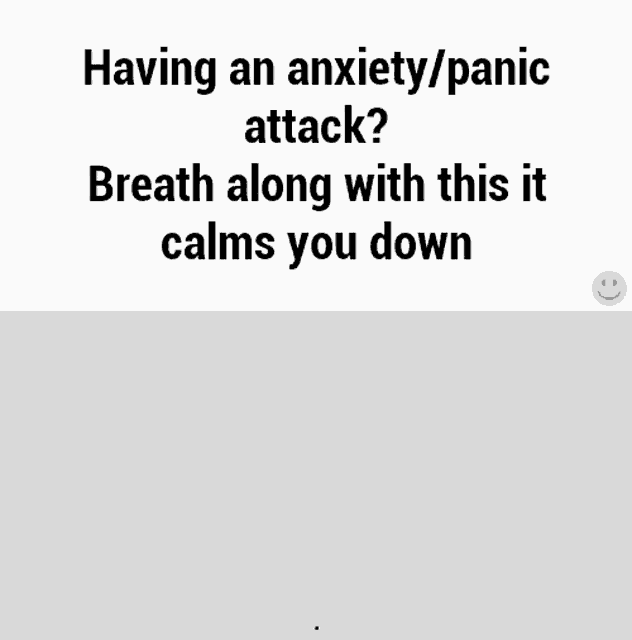 You may feel tired afterwards.
You may feel tired afterwards.
Visit the No Panic website for another breathing exercise to calm panic.
Ways to prevent panic attacks
"You need to try to work out what particular stress you might be under that could make your symptoms worse," says Professor Salkovskis. "It's important not to restrict your movements and daily activities."
Do
- practice breathing exercises every day to help prevent panic attacks and relieve them when they happen
- practice regular exercise, especially aerobic exercise, to help you to manage stress levels, release tension, improve your mood and boost confidence
- eat regular meals to stabilise your blood sugar levels
- avoid caffeine, alcohol and smoking – these can make panic attacks worse
- try a panic support groups to get useful advice about how to manage your attacks – your GP can put you in touch with groups in your area
- try cognitive behavioural therapy (CBT) to identify and change the negative thought patterns that are feeding your panic attacks
Is it panic disorder?
If you feel constantly stressed and anxious, particularly about when your next panic attack may be, you may have panic disorder.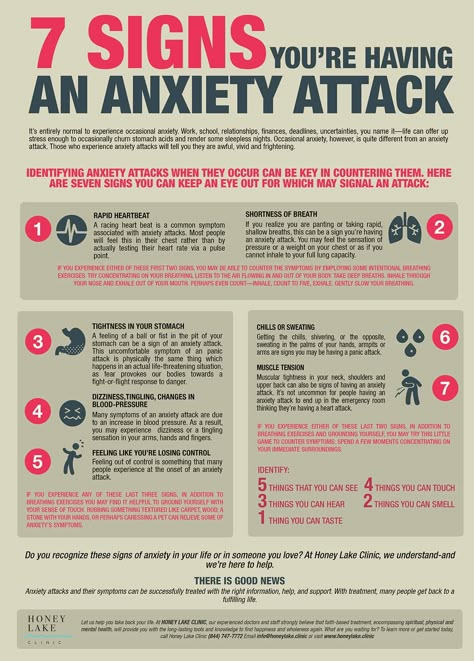
People with panic disorder may avoid situations that might cause a panic attack. They may also fear and avoid public spaces (agoraphobia).
"There's no quick fix, but if your attacks are happening time after time, seek medical help," says Professor Salkovskis.
Read more about panic attacks, including personal stories, at See Me Scotland
Source: Health Scotland - Opens in new browser window
Last updated:
05 January 2023
How can we improve this page?
Help us improve NHS inform
Don’t include personal information e.g. name, location or any personal health conditions.
Email Address e.g. [email protected]
Message Maximum of 500 characters
Community content from Health Unlocked - This will open in a new window.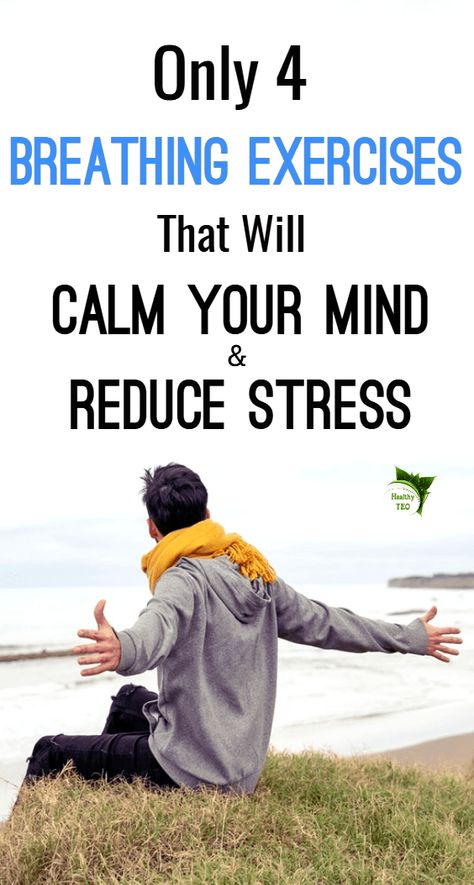
Search for anxiety and panic services
Enter a place or postcode8 Breathing Exercises for Anxiety You Can Try Right Now
Stress and anxiety can negatively impact your health in many ways. However, several types of breathing techniques can help bring about a relaxation response, which may help you feel calmer and more centered.
If you feel breathless due to anxiety, there are breathing techniques you can try to alleviate symptoms and start feeling better.
Let’s look at several you can do on at any point during your day or build into longer moments for yourself.
Inhaling deeply may not always calm you down. Taking a deep breath in is actually linked to the sympathetic nervous system, which controls the fight-or-flight response. But exhaling is linked to the parasympathetic nervous system, which influences our body’s ability to relax and calm down.
Taking too many deep breaths too quickly can actually cause you to hyperventilate.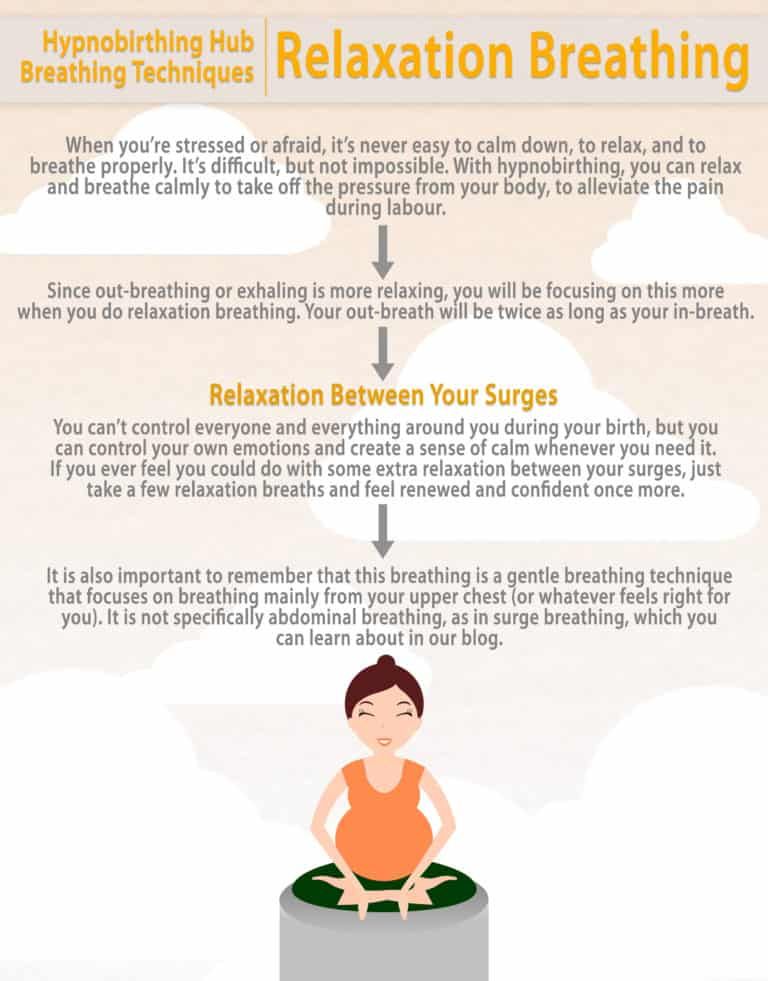 Hyperventilation decreases the amount of oxygen-rich blood that flows to your brain.
Hyperventilation decreases the amount of oxygen-rich blood that flows to your brain.
When we feel anxious or under stress, it’s easier to breathe too much and end up hyperventilating — even if we’re trying to do the opposite.
- Before you take a big, deep breath, try a thorough exhale instead. Push all the air out of your lungs, then simply let your lungs do their work inhaling air.
- Next, try spending a little bit longer exhaling than you do inhaling. For example, try inhaling for four seconds, then exhale for six.
- Try doing this for two to five minutes.
This technique can be done in any position that’s comfortable for you, including standing, sitting, or lying down.
Breathing from your diaphragm (the muscle that sits just beneath your lungs) can help reduce the amount of work your body needs to do in order to breathe.
To learn how to breathe from your diaphragm:
Check-in
- For comfort, lie down on the floor or bed with pillows beneath your head and knees.
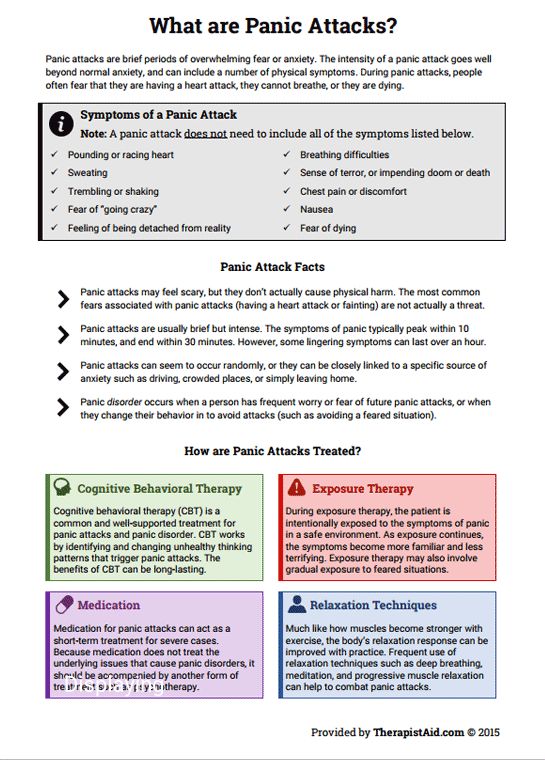 Or sit in a comfortable chair with your head, neck, and shoulders relaxed, and your knees bent.
Or sit in a comfortable chair with your head, neck, and shoulders relaxed, and your knees bent. - Then, put one hand under your rib cage and one hand over your heart.
- Inhale and exhale through your nose, noticing how or if your stomach and chest move as you breathe.
- Can you isolate your breathing so you bring air deeper into your lungs? What about the reverse? Can you breathe so your chest moves more than your stomach?
Eventually, you want your stomach to move as you breathe, instead of your chest.
Practice belly breathing
- Sit or lie down as described above.
- Place one hand on your chest and one hand on your stomach somewhere above your belly button.
- Breathe in through your nose, noticing your stomach rise. Your chest should remain relatively still.
- Purse your lips and exhale through your mouth. Try engaging your stomach muscles to push air out at the end of the breath.
For this type of breathing to become automatic, you’ll need to practice it daily.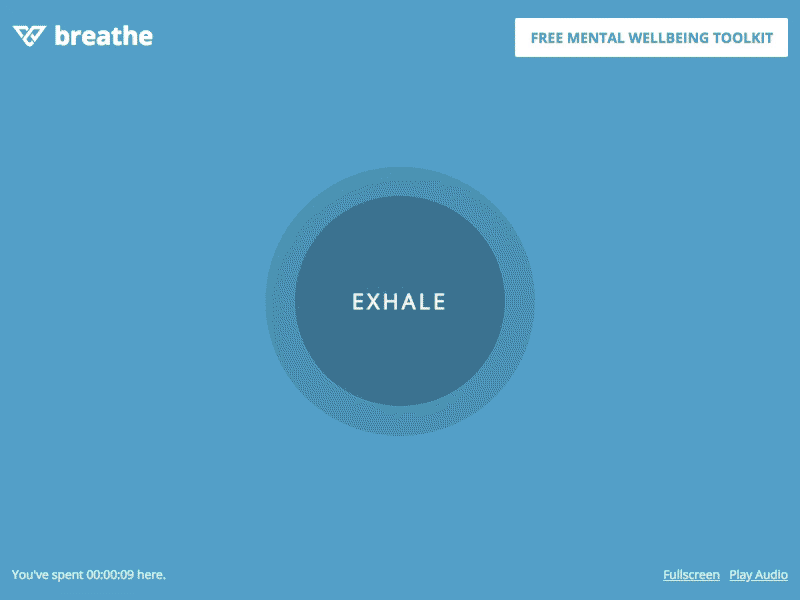 Try doing the exercise three or four times a day for up to 10 minutes.
Try doing the exercise three or four times a day for up to 10 minutes.
If you haven’t been using your diaphragm to breathe, you may feel tired at first. It’ll get easier with practice though.
When deep breathing is focused and slow, it can help reduce anxiety. You can do this technique by sitting or lying down in a quiet, comfortable location. Then:
- Notice how it feels when you inhale and exhale normally. Mentally scan your body. You might feel tension in your body that you never noticed.
- Take a slow, deep breath through your nose.
- Notice your belly and upper body expanding.
- Exhale in whatever way is most comfortable for you, sighing if you wish.
- Do this for several minutes, paying attention to the rise and fall of your belly.
- Choose a word to focus on and vocalize during your exhale. Words like “safe” and “calm” can be effective.
- Imagine your inhale washing over you like a gentle wave.
- Imagine your exhale carrying negative and upsetting thoughts and energy away from you.
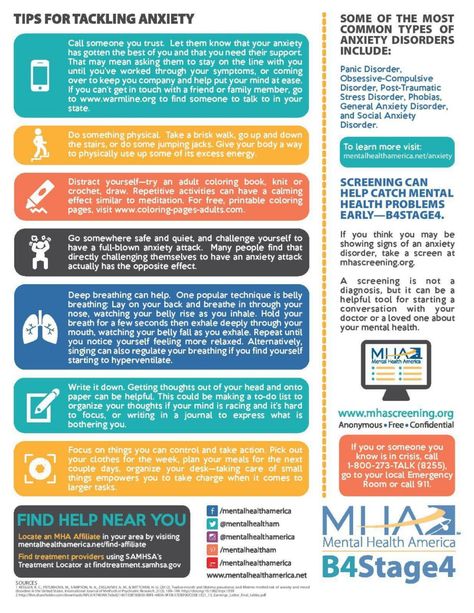
- When you get distracted, gently bring your attention back to your breath and your words.
Practice this technique for up to 20 minutes daily when you can.
Another form of breathing that stems from the ancient practice of pranayama yoga is equal breathing. This means you’re inhaling for the same amount of time as you’re exhaling.
You can practice equal breathing from a sitting or lying-down position. Whichever position you choose, be sure to get comfortable.
- Shut your eyes and pay attention to the way you normally breathe for several breaths.
- Then, slowly count 1-2-3-4 as you inhale through your nose.
- Exhale for the same four-second count.
- As you inhale and exhale, be mindful of the feelings of fullness and emptiness in your lungs.
As you continue practicing equal breathing, your second count might vary. Be sure to keep your inhale and exhale the same.
Resonant breathing, also called coherent breathing, can help you calm anxiety and get into a relaxed state.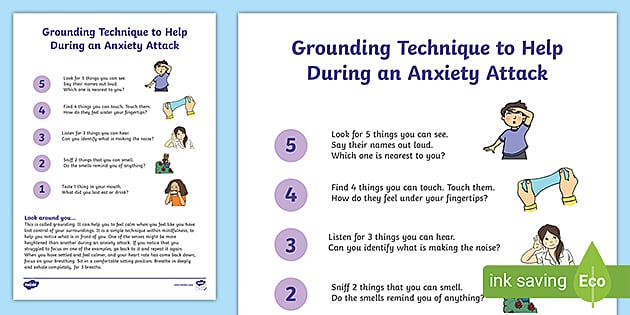 To try it yourself:
To try it yourself:
- Lie down and close your eyes.
- Gently breathe in through your nose, mouth closed, for a count of six seconds.
- Don’t fill your lungs too full of air.
- Exhale for six seconds, allowing your breath to leave your body slowly and gently. Don’t force it.
- Continue for up to 10 minutes.
- Take a few additional minutes to be still and focus on how your body feels.
Yoga is a wellness practice with ancient roots, and breathing is at the heart of each variation of yoga.
One form of yoga, pranayama, includes multiple breathing variations that may help with anxiety. Some of these include lengthened exhale and equal breathing (both featured above), as well as lion’s breath and alternate nostril breathing (nadi shodhana).
Lion’s breath involves exhaling forcefully. To try lion’s breath:
- Get into a kneeling position, crossing your ankles and resting your bottom on your feet. If this position isn’t comfortable, sit cross-legged.
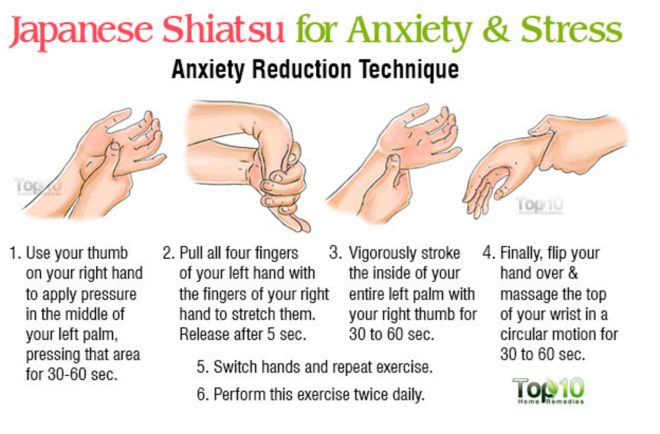
- Bring your hands to your knees, stretching out your arms and your fingers.
- Take a breath in through your nose.
- Breathe out through your mouth, allowing yourself to vocalize “ha.”
- During exhale, open your mouth as wide as you can and stick your tongue out, stretching it down toward your chin as far as it will go.
- Focus on the middle of your forehead (third eye) or the end of your nose while exhaling.
- Relax your face as you inhale again.
- Repeat the practice up to six times, changing the cross of your ankles when you reach the halfway point.
To try alternate nostril breathing, sit down in a comfortable place, lengthening your spine and opening your chest.
Rest your left hand in your lap and raise your right hand. Then, rest the pointer and middle fingers of your right hand on your forehead, in between the eyebrows. Close your eyes, inhaling and exhaling through your nose.
- Use your right thumb to close the right-hand nostril and inhale slowly through the left.
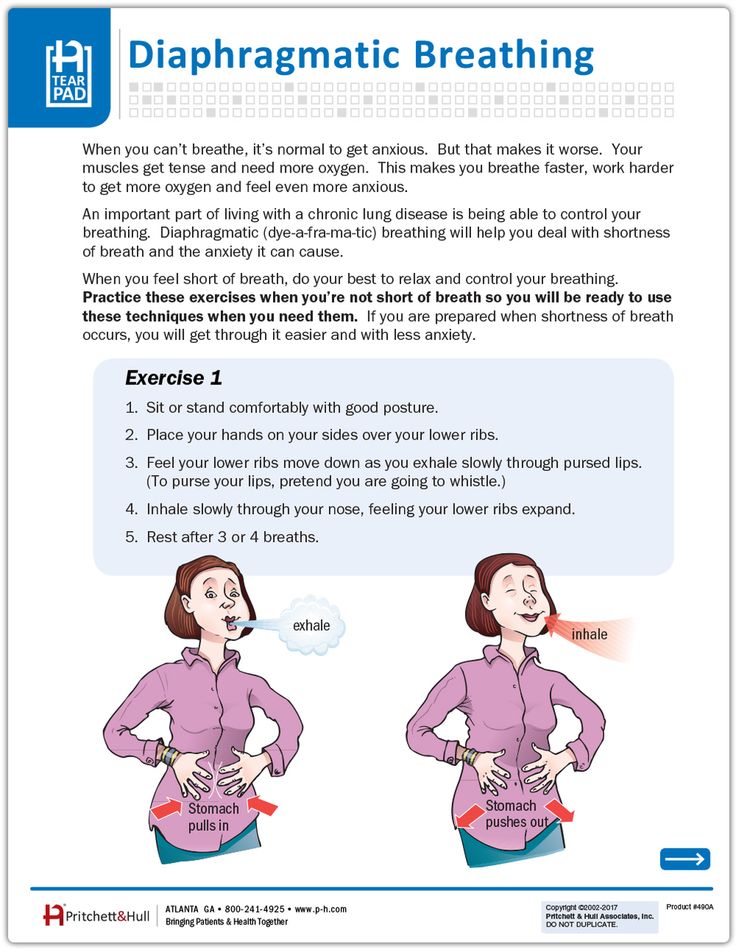
- Pinch your nose closed between your right thumb and ring finger, holding the breath in for a moment.
- Use your right ring finger to close your left nostril and exhale through the right, waiting for a moment before you inhale again.
- Inhale slowly through the right nostril.
- Pinch your nose closed again, pausing for a moment.
- Now, open the left side and exhale, waiting a moment before you inhale again.
- Repeat this cycle of inhaling and exhaling through either nostril up to 10 times. Each cycle should take up to 40 seconds.
Some people use guided meditation to alleviate anxiety by interrupting patterns of thinking that perpetuate stress.
You can practice guided meditation by sitting or lying in a cool, dark, comfortable place and relaxing. Then, listen to calming recordings while relaxing your body and steadying your breathing.
Guided meditation recordings help take you through the steps of visualizing a calmer, less stressed reality.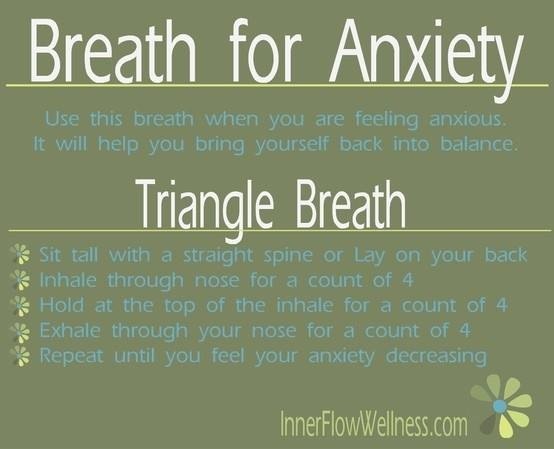 It can also help you gain control over intrusive thoughts that trigger anxiety.
It can also help you gain control over intrusive thoughts that trigger anxiety.
Meditation can help you establish new habits and patterns of thinking. If you’d like to try it yourself, UCLA has guided meditation recordings available for streaming here.
If you’re experiencing anxiety or panic attacks, try using one or more of these breathing techniques to see if they can alleviate your symptoms.
If your anxiety persists or gets worse, make an appointment with your doctor to discuss your symptoms and possible treatments. With the right approach, you can regain your quality of life and control over your anxiety.
What a psychotherapist will teach you: 3 exercises against anxiety - personal experience
612 659
Health and beauty The heart began to beat, the body began to throw in a fever, then in a shiver. I was shackled by a paralyzing fear, although I was in my apartment, so nothing threatened. It is not clear why it all started, until that evening I had not come across anything like this.
Since the first panic attack, mental health has turned 180 degrees. The last four years of life were filled with many happy moments, but also with suffering, pain and struggle with anxiety for control of life.
Of course, I tried to follow the standard advice, such as consuming less caffeine and exercising. In addition, I decided to seek help from a psychotherapist. He taught me exercises that reduced my anxiety levels. Here are the most effective methods.
1. Diaphragmatic breathing
The diaphragm is a muscle located between the thoracic and abdominal cavities. The breathing technique teaches you how to use it correctly in order to breathe properly. The exercise is easy to perform anywhere, especially in places where panic attacks often occur: for example, in the subway, office or airplane.
How to do it
Place one hand on the abdomen and the other on the chest. Inhale slowly through your nose until you feel your belly move with your hand.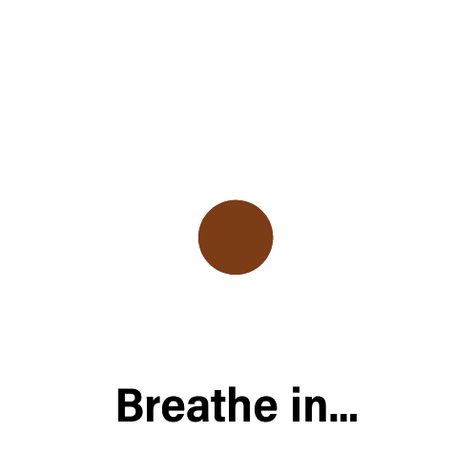 The chest should remain at rest. Imagine that your stomach is a balloon that you are trying to inflate while your chest is not moving. After inhaling, tighten your abdominal muscles and exhale through pursed lips. When you start practicing diaphragmatic breathing, you may feel tired and even a little dizzy, you will get used to it over time.
The chest should remain at rest. Imagine that your stomach is a balloon that you are trying to inflate while your chest is not moving. After inhaling, tighten your abdominal muscles and exhale through pursed lips. When you start practicing diaphragmatic breathing, you may feel tired and even a little dizzy, you will get used to it over time.
How it can help
Breathing reduces anxiety because it helps you use less energy and effort to breathe, slows your heart rate, and helps lower blood pressure.
2. Mindful meditation
In the process, you learn to keep your mind fully in the present and drive away distracting thoughts and negative thought patterns. Meditation used to be a spiritual practice, but now many turn to it to increase concentration, learn to follow thoughts and relieve stress.
How to do it
Sit in a quiet place and set a timer on your phone for five minutes. This time will seem much longer than you imagine.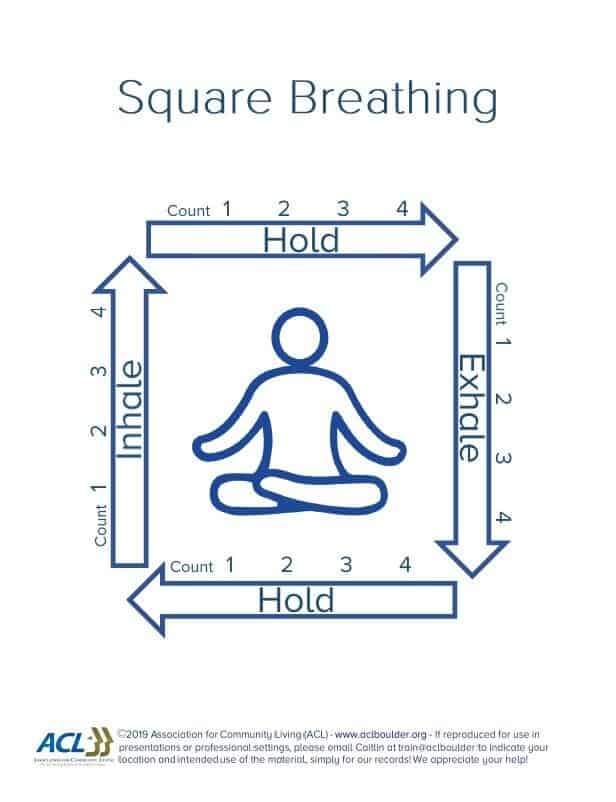 Close your eyes, relax and observe your body and breath. Pay attention to the sensations in your body and listen to the sound of your breath. At some point, thoughts will fly far away, this is a natural reaction. As soon as you notice that your brain has begun to wander, bring your attention back to your breath. Be patient. The first few practices of thought will constantly fly away, this is normal.
Close your eyes, relax and observe your body and breath. Pay attention to the sensations in your body and listen to the sound of your breath. At some point, thoughts will fly far away, this is a natural reaction. As soon as you notice that your brain has begun to wander, bring your attention back to your breath. Be patient. The first few practices of thought will constantly fly away, this is normal.
How it can help
The technique teaches you to focus on the present and stop negative thoughts.
3. Progressive Muscle Relaxation
Exercise helps you relax, worry less during the day, and fall asleep when it is difficult to slow down the activity of the mind and body.
How to do it
You first feel and then tense the muscles in your body, such as your neck, shoulders, hands, or feet. Then let go of the tension and allow yourself to relax. So, my therapist suggested focusing on the feet, and then we started to work the whole body upwards. We paid attention to every part of the body, found tense muscles and concentrated on relaxing them.
We paid attention to every part of the body, found tense muscles and concentrated on relaxing them.
How it can help
Muscle relaxation helps you listen to your body and notice tension you didn't feel before, and work with your muscles when they tense up during a panic attack.
About the author: Kim Quindlen is a blogger and author of Thought Catalog.
According to theeverygirl.com
Text: Zhanna Omelyanenko Photo source: Unsplash
New on the website0003
Test: What makes you doubt yourself?
“My mother is an abuser, and my grandmother is her victim”
“The investigation was conducted”: why we are so interested in criminals and how it affects our psyche
What gives us the ability to desire and how to develop it: 3 techniques
“Amelie ”, “French Kiss”, “The Old Maid”: 7 extraordinary films about love - watch this weekend
0003
"Children's resentment towards the father interferes with building healthy relationships"
How to breathe correctly during panic attacks
- Home
- How to breathe correctly during panic attacks?
Services
Appointments
Your name*
Telephone*
Message
Enter characters from the picture*:
I agree with the processing of my personal data in accordance with the privacy policy
I agree to receive marketing communications
When a feeling of panic fear can appear at any moment, even if there is no apparent reason, it spoils life.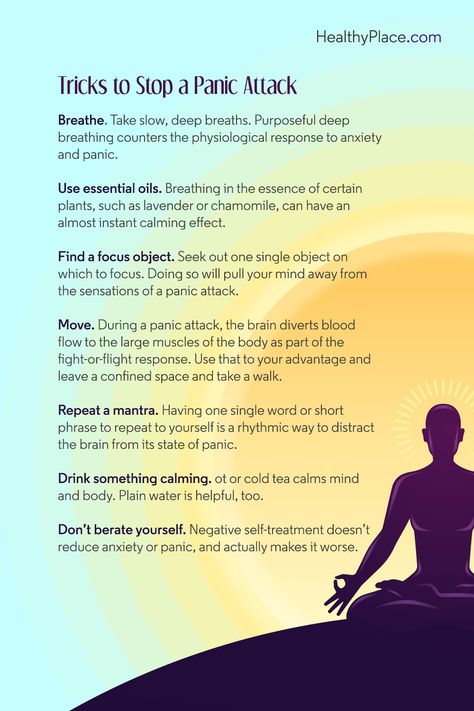 A sudden feeling of terror can grip a person at home, on the street, or at work. There are several ways to suppress panic attacks. The main and most effective of them is breathing exercises.
A sudden feeling of terror can grip a person at home, on the street, or at work. There are several ways to suppress panic attacks. The main and most effective of them is breathing exercises.
When should I do breathing exercises?
You need to start breathing correctly in advance, as soon as you feel that a panic attack is approaching. But how to recognize it? What are its symptoms? Experts identify several signs of the onset of a panic attack:
- nausea;
- dizziness;
- feeling short of breath;
- anxiety;
- excitement;
- confusion of thoughts and consciousness;
- people cease to control their actions;
- goosebumps under the skin;
- profuse sweating;
- rapid pulse;
- palpitations;
- shortness of breath;
- appearance of a coma in the throat;
- fast breathing.
It is very often difficult for a person who suffers from this disease to recognize the onset of a panic attack.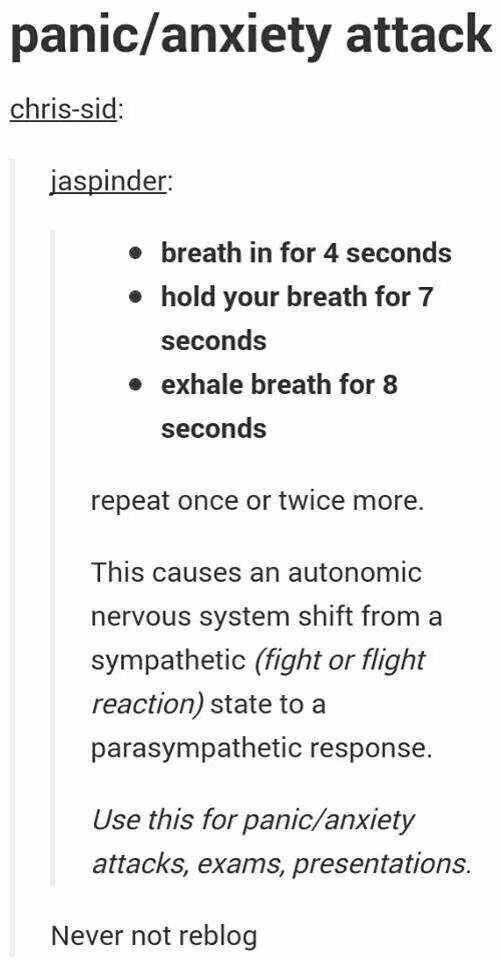 Most people cease to understand what is happening around when there is a feeling of fear.
Most people cease to understand what is happening around when there is a feeling of fear.
Breathing Techniques
There are several techniques that can help you calm down and overcome a panic attack. There are five main techniques:
- Belly breathing. To perform this exercise, you must take a sitting or lying position. Next, you need to calm down, you can imagine what relaxes you. After that, you should put your hand on the upper abdomen to feel the rise and fall of the anterior abdominal wall. On inspiration, it is necessary to raise the stomach as much as possible by filling the lungs with air. On exhalation, the stomach should be pulled in as much as possible. You need to breathe measuredly, slowly.
- 4/4. In this technique, you also need to take a comfortable position. You need to exhale and inhale for 4 counts. Such a technique will help set the rhythm that will suppress a panic attack, calm it down, and also nourish the brain with oxygen.
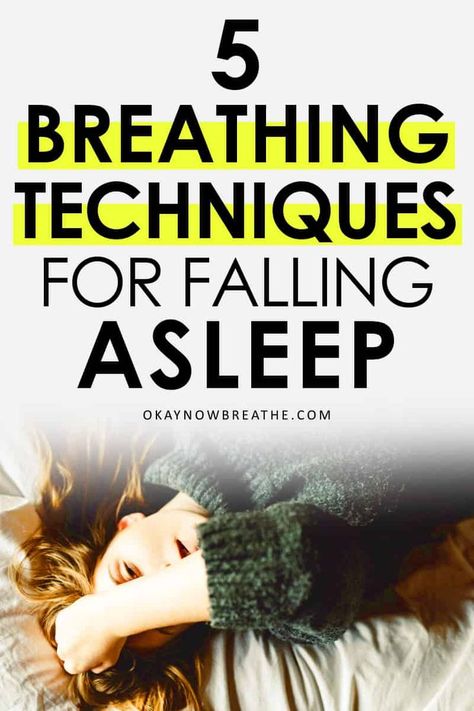
- Slow and deep breathing. This exercise can be done anywhere. You need to straighten your shoulders and take slow measured breaths and exhalations. The technique will help restore the former balance and suppress the panic attack.
- Holding the breath. This technique helps when superficial inhalations and exhalations occur. In order to normalize breathing, you need to hold it for 6-10 seconds. Then you need to take a deep breath and inhale.
- Synchronization of rhythms. The exercise is similar to the 4/4 technique. Only for this technique you need to feel the pulse, inhale for the first four beats, exhale for the second.
Why is it effective?
When a panic attack occurs, breathing becomes erratic and begins to quicken. At rest, breathing is slow. By performing the above exercise techniques, a person activates the areas of the brain that are responsible for sleep, rest and relaxation of the body. It helps to calm down and gain control over your body.